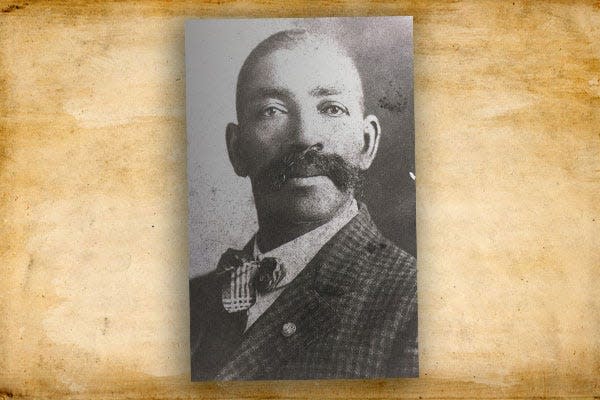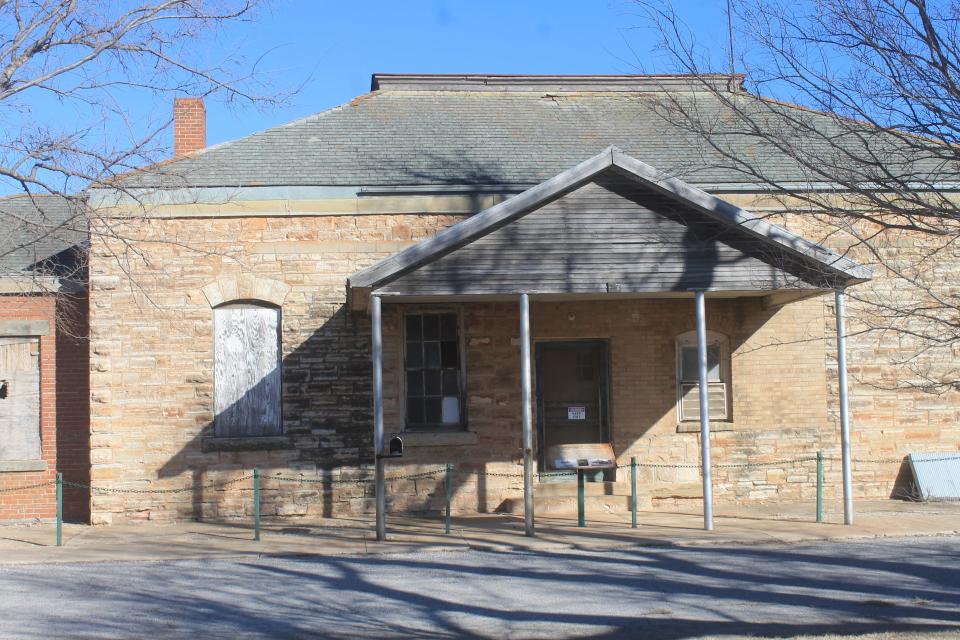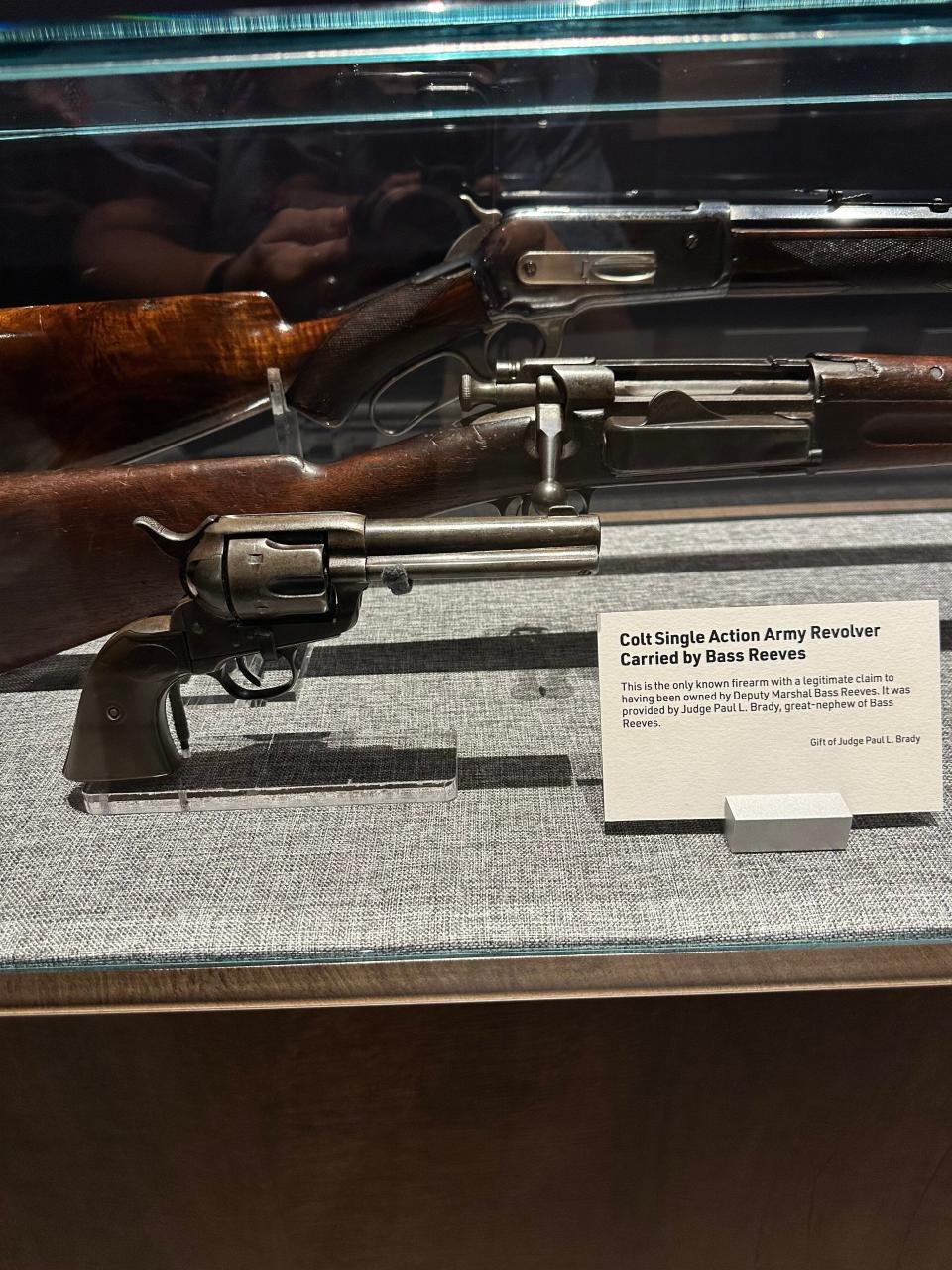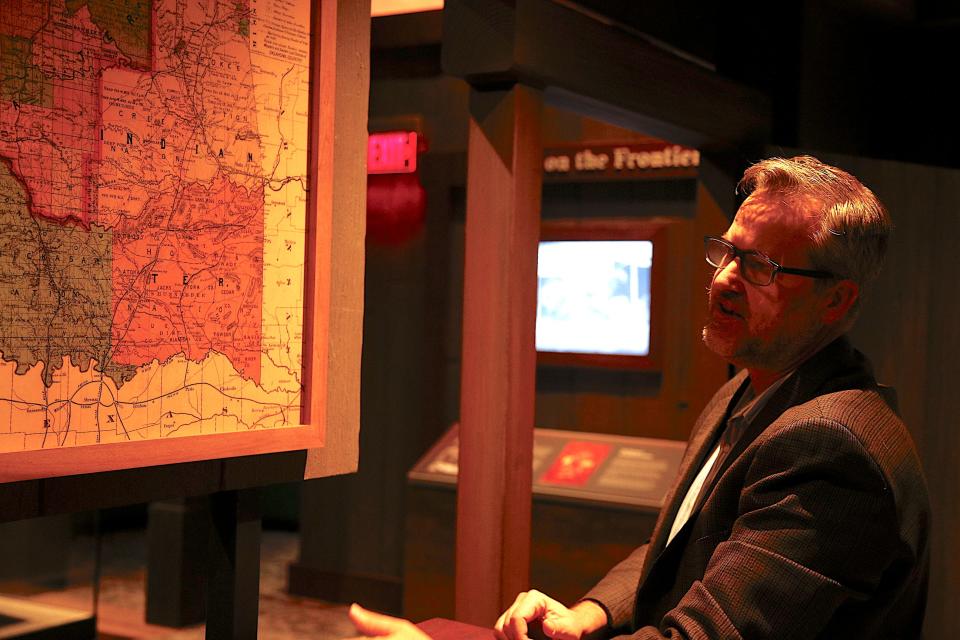New show about legendary lawman Bass Reeves brings attention to Fort Smith museum
- Oops!Something went wrong.Please try again later.

From the hills of eastern Oklahoma, the legendary U.S. deputy marshal Bass Reeves rode with a posse into the Indian Territory, what is now Oklahoma.
Setting out from Fort Smith, Arkansas, Bass Reeves — once the slave of a Confederate from Texas in the Civil War — would become a U.S. deputy marshal who is said to have brought back 3,000 fugitives from federal law in the days before Oklahoma was a state.
The legends surrounding Bass Reeves have inspired a western series, a spinoff of the “Yellowstone” series, that has been streaming on Paramount+.

In Fort Smith, in the U.S. Marshals Museum that opened July 1, curator Dave Kennedy continues to research the life of Bass Reeves, whose many myths and legends have even connected him to the inspiration for the Lone Ranger character in western fiction lore.
The $47 million museum is expected to draw 125,000 visitors a year to the Arkansas River Valley with an economic impact of $13 million to $22 million. The timing of the Bass Reeves series is good for the museum where Reeves, a Fort Smith hero, is prominently displayed.
Will the real Bass Reeves stand up?
Hollywood and paperback writers are not the only ones who have created Bass Reeves fiction. There is plenty of it found in the family tales and oral history handed down, Kennedy said. He had a call from a woman in Little Rock who said she was certain Bass Reeves had been involved in an incident there. He had not.
Kennedy said deputy marshals often had assignments in the days before paper records were always saved and stored. But many receipts for pay have been located and letters and other history exist in archives in Arkansas.

If the military arrested someone who was held at Fort Reno, a deputy marshal would arrive to escort them to court. Once prisoners could ride in custody on a train, law officers could take trains from a U.S. fort to a courthouse jail in Fort Smith.
“Bass Reeves went all over central Oklahoma at different times,” Kennedy said. “Typically it depends on the warrant they had and whether the person had been arrested by the military. There was a unit of Black soldiers at Fort Gibson who delivered prisoners to Van Buren."
How far west Bass Reeves rode remains an open question. Debra Kauffman is a full-time volunteer at the Fort Reno Visitors Center and Museum in Canadian County, Oklahoma, about 40 miles west of downtown Oklahoma City on flat prairie. Fort Reno was in the jurisdiction of the United States District Court for the Western District of Arkansas when Reeves was a deputy marshal. Whether he was ever at Fort Reno is not known.

Reeves, who escaped from slavery during the Civil War, was the go-to deputy marshal for picking up fugitives in Indian Territory. He could have gone to Fort Sill, then north to Fort Reno, according to at least one western magazine article, and back to Fort Smith. Reeves is said to have killed more than 20 men.
His pistol, a Colt single-action Army service revolver, is in the U.S. Marshals Museum in Fort Smith.
Kauffman said there is little history at Fort Reno about the U.S. Marshals Service and their role in the frontier days of federal law and order. Another frontier lawman was Chris Madsen, a U.S. marshal during the years Reeves was active. Madsen served in the 6th Cavalry and is buried at the Richland Cemetery in Canadian County.

Reeves lived near Van Buren and raised a family there.
His real story is told in the new U.S. Marshals Museum, on the banks of the Arkansas River in Fort Smith, just blocks from the federal courthouse where Reeves was a deputy marshal under the famous hanging judge Judge Isaac Parker. Reeves would work from 1875 to 1907 before Oklahoma became a state and Reeves became a police officer in Muskogee.
Reeves stood 6 feet and 2 inches tall. He had superior aim with a rifle or pistol. He covered hundreds and hundreds of miles in uninhabited, wild land. Stories about him grew wild, too. More are coming in since the streaming western fiction series, said Kennedy, the curator of the Fort Smith museum.

“There are a lot of claims made about Bass,” Kennedy said, noting that since “Lawmen: Bass Reeves,” was released, there has been an uptick in interest in the U.S. Marshals Service.
In the first six months since the Fort Smith museum opened, there were 35,000 visitors from all 50 states and more than a dozen countries, he said.
Recently, Kennedy and local historians, including Caroline Speir from the Fort Smith Museum of History, hosted a talk about Hollywood and western history. Whether all the facts are straight in the TV series is not as important as spreading the word about the life of a real person, a lawman of color, he said.

“Here we are more than 100 years after the passing of Bass Reeves and we are talking about a person of color who was shoved out of the history of the region.”
Robert Medley is a former editor of the Fort Smith Southwest Times Record and current editor of the Piedmont-Surrey Gazette in Canadian County, Oklahoma.
This article originally appeared on Springfield News-Leader: Bass Reeves show brings attention to Fort Smith's U.S. Marshals Museum

